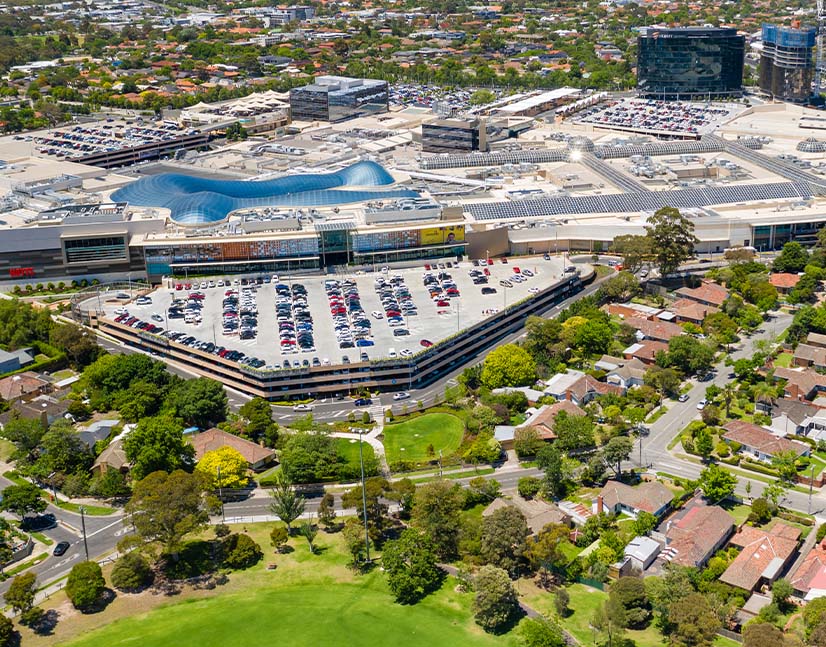
Rates strategists look ahead
In January 2020, KangaNews convened its annual roundtable of Australian major-bank rates strategists to discuss the outlook for the local government-sector bond market. There is a degree of confidence in the outlook for bond performance. Immediate ends to Australia’s sluggish growth profile and dovish rates outlook are less likely.

AUSTRALIAN MACRO CONDITIONS
Davison The prevailing theme in the Australian market over the last 18 months or so has been the evaporation of rate-hike expectations. Indeed, the prospect of QE is now firmly on the agenda as the Reserve Bank of Australia (RBA) approaches its lower bound for the cash rate. What outlooks for monetary policy in 2020 do strategists have at the start of the new year?
This is based in part on the fact that we have a completely opposite view to the reserve bank on unemployment, which we think will rise to 5.6 per cent during 2020. We also have a significantly weaker view on business investment, dwelling construction and consumer spending than the RBA is forecasting.
Our conviction in further easing reflects our view the economy is moving further away from the targets that the RBA has set. Growth will remain below trend, while we think the RBA is too optimistic in its unemployment and inflation forecasts.
We do not expect much in the way of fiscal-policy support, although this is something that could have a significant bearing on outcomes for rates.
We also take the view that the RBA is being optimistic in its forecasting. We don’t think growth will be strong enough to reduce unemployment in the absence of further rate cuts. But we do take the view that trend growth is quite a bit lower than the RBA, federal Treasury and market believe. This means it will take less growth than many expect to get unemployment onto a downward path.
We don’t anticipate QE. We believe the hurdle for QE is very, very high for the RBA. The governor has already made clear that QE is something the RBA would deploy only in a crisis – that it is not a natural progression of monetary policy. Even if QE did eventuate, our feeling is that it would be at least a year after the last rate cut, unless there was a negative shock.
The fiscal side is probably more important, though. The government has been committed to surplus this year, but we will be interested to see whether the impact of bushfires and now coronavirus provides sufficient cover for that commitment to be wound back. It’s a political consideration, but there might be scope for the government to say consumption has weakened as a result of the disaster and it is for the greater good to spend a bit more money.
The states have already started spending more and we have to ask what capacity they have to increase this. They already have quite large borrowing programmes and there is some limit coming from how we think the rating agencies might view further growth in borrowing. This applies mainly to New South Wales (NSW).
A federal response is what’s needed, and this may mean a delay to delivery of fiscal surplus. On the other hand, we don’t see a massive fiscal disbursement as likely, because the government won’t want to damage its prospects of surplus for a year hence.
Our view is that the RBA needs to get bang for its buck in the transmission mechanism through the currency. It will be up against competing influences globally and will not want to lose the impact of rate cuts.
Davison The efficacy of rate cuts seems to have been limited so far. Australia is undergoing an apparent property revival and the equity market is strong, but there is still very little wages growth or private-sector investment, and household confidence remains low. Do these circumstances depict a cyclical slowdown or a more structural change?
At the same time, although we have seen house prices recovering they are still below peak levels. There is still a negative wealth effect from housing, in other words – though this probably won’t be around for much longer.
Consumer-confidence surveys consistently indicate a disconnect between how people feel about their own finances – which essentially are at a record high – and the economic environment. This divergence is of a record scale and it reduces the efficacy of monetary policy. I think this comes down to a whole range of factors, including digital disruption, trade tension and domestic policy uncertainty.
Historically, economic negativity tends to fade provided employment holds up. Households have built up quite a buffer in their borrowing so confidence could improve if we get a continued wealth effect from housing and shares, and employment holds up – which is the biggest question mark. It’s more a hope than a central possibility for us, though.
Davison The information from the states suggests that housing turnover has stayed relatively low even as prices have rebounded.
Davison There seemed to be early positive signs in the household sector after tax cuts in 2019, but these faded fast. Why wasn’t there a longer boost to confidence and spending?
These circumstances pretty much continued through the second half of 2019. All the numbers suggested a pick up in consumer activity around Black Friday, but it seems largely to have been spending brought forward: the data so far suggest 2019 had a really poor December for retail sales.
Davison Going back to the issue of cyclical versus structural influences, the RBA has revised the nonaccelerating inflation rate of unemployment (NAIRU) down to 4.5 per cent from 5.25 per cent a few years ago. Given the challenges of underemployment, does the NAIRU need to be even lower?
What has changed is that there is now a far higher level of underemployment for any given level of unemployment. There has been a step-shift upwards in underemployment as part-time employment has grown.
I think most market participants were sceptical of the idea that NAIRU was more than 5 per cent a few years ago. We see some downside risk to the RBA’s current 4.5 per cent NAIRU target, too.
Davison Most of the Australian states are embarking on large infrastructure spending programmes over the next few years. To what extent will these provide a de facto fiscal stimulus for the local economy?
What this means is that the government-sector contribution to GDP growth, on some projections, may actually lessen over the coming years. This is after being extremely strong for the last couple of years, however. The suggestion that governments should do more has perhaps been a bit unfair in recent times, because they were providing most of the growth. Looking forward, arguing the case for additional government support has more merit.
Performance and relative value
Strategists say Australian bond outperformance may not be able to continue throughout 2020. But they also do not expect a dramatic spread reversal to emerge.
STANLEY We are bullish on semi-government and government bonds. The starting point for yields is a lot lower in 2020 than it was a year ago so the level of returns probably won’t be what it was. We see global growth stabilising at a slower pace, rather than rebounding significantly. Global yields will, therefore, mostly be range-bound. In contrast, we see the Reserve Bank of Australia (RBA) cutting rates more than is currently priced so we expect the drivers of performance to be more domestic than global, relative to last year.
We think semi-governments spreads will grind tighter. Low rates are supportive, the market is familiar with the infrastructure-driven nature of increased bond supply and we don’t foresee ratings issues.
GLOBAL OUTLOOK
Davison Global markets have started 2020 in dynamic fashion, with the feeling seeming to be that a lot of the previous year’s uncertainty is in the past, even if economic growth remains sluggish. What should we expect for the year ahead?
The US election is vital here – in particular the type of alternative government that may be on the table. Candidates such as Elizabeth Warren and Bernie Sanders would ensure discussion of a very different range of options in an election campaign.
We also don’t think trade tensions are resolved. It’s true that the US and China have signed a trade agreement, but we are not convinced of China’s ability to achieve everything it has promised even in phase one of the deal. We certainly think it is possible that the US will be unhappy with China’s conduct again before 2020 is over, and if this happens we could easily envisage the return of tariffs.
Overall, I would characterise our global theme for 2020 as more of the same, as opposed to achieving a more benign outcome. This is why we see more downside risk than some others. But it’s marginal; for instance, we project Chinese growth at 5.8 per cent relative to a consensus of 6 per cent. This is before the impact of the coronavirus is taken into account. The impacts on Chinese and global growth intensify exponentially the longer the duration of the outbreak.
On the other hand, one of our key assumptions is that Donald Trump will prioritise being re-elected above everything else this year. History suggests the best way not to be re-elected is to have a weak economy at the time of the election, so there is a clear political incentive to ease the rhetoric around trade.
We agree that if the Fed is going to do anything this year it will be cutting rates. The market will find it hard to price any significant risk of a hike, which makes us think that if the US Treasury 10-year yield reaches about 2 per cent it is a pretty strong buying signal.
We don’t expect central banks globally to be doing much this year. Absent any unforeseen shocks, ongoing easy policy and the flow through to financial conditions will help support stability. But we don’t expect much re-acceleration in global growth.


We have a little concern that financial conditions have been tighter of late, through the repo market and flow-on effects to the cost of money. Longer-end lending is up a little bit, and if a sustainable rise in yield affects the housing market it will really weigh on the US economy. How the Fed plays its hand is going to be very important.
I’d also suggest that no-one who has ever played a game of whack-a-mole would expect nothing to pop up. Any of the concerns we have could surface at any moment, though perhaps the biggest risk is the range of candidates in the US election. The range of economic reactions is very wide.
But there are plenty of things to be aware of: the coronavirus could be a huge issue, if it significantly slows down the only area of the world that is growing at a significant pace, for instance.
Davison Are markets pricing in too much confidence in stability? Equity prices, for instance, simply don’t seem to reflect economic reality.
AUSTRALIAN ISSUANCE
Davison Is the market comfortable with the consequences of state borrowing profiles and debt positions?
There is a good degree of comfort with the most recent set of state debt projections, and we’re certainly not at a tipping point when it comes to marginal investor concern about funding – or at least I haven’t heard of any push back.
In effect, what the states are asking for is the continuation of a change in investor behaviour that has already happened. This is especially the case for domestic real-money investors but it applies to other investor cohorts, too.
The issue is the price – whether the states will need to pay up for their debt. I suspect they won’t need to, in part because the currency will adjust for them if it is needed to encourage additional demand.
More importantly, the borrowing largely reflects infrastructure investment. If the borrowing had instead reflected increases in recurrent expenditure, it would make it harder for the states to adjust to any shock to revenue or the economy. It’s the right type of debt, and the borrowing is happening in a low-rate environment. I think this provides a backstop to spreads.
New buyers, domestic and offshore, continue to come into the Australian market. One thing that has helped is lower hedge costs, which is actually a positive product of Australia moving closer to the homogenous zero-rate position.
We aren’t worried about volume of supply or by the fact that the semi-governments are becoming a larger component of the market. The federal government has been reducing its borrowing over recent years and 61 per cent of new supply in 2020 is expected to come from the states – in some ways it is an offset.
Davison Are you suggesting that Australian government-sector issuers are now more appealing to global investors than they were when Australia was offering a 5 per cent yield pickup over the US?
Davison The Australian states have observed a pickup in support from domestic real money over the past year or two. What has driven this?
Even in the absence of balance-sheet growth, about 25 per cent of the forward issuance growth profile for the states is covered by the banks’ need to replace maturing liquid assets. This baseline demand gives a lot of comfort to real-money buyers.
I don’t expect the high-level mix of investors in the sector to shift too much, because the offshore bid seems at least to be willing to replace maturities.
The bulk of these profiles have moved out to 7-8 year tenor, which has substantially diminished rollover risk. I’m not saying they were bad financial managers a decade ago, but they have certainly got better.

HIGH-GRADE ISSUERS YEARBOOK 2023
The ultimate guide to Australian and New Zealand government-sector borrowers.

WOMEN IN CAPITAL MARKETS Yearbook 2023
KangaNews's annual yearbook amplifying female voices in the Australian capital market.










